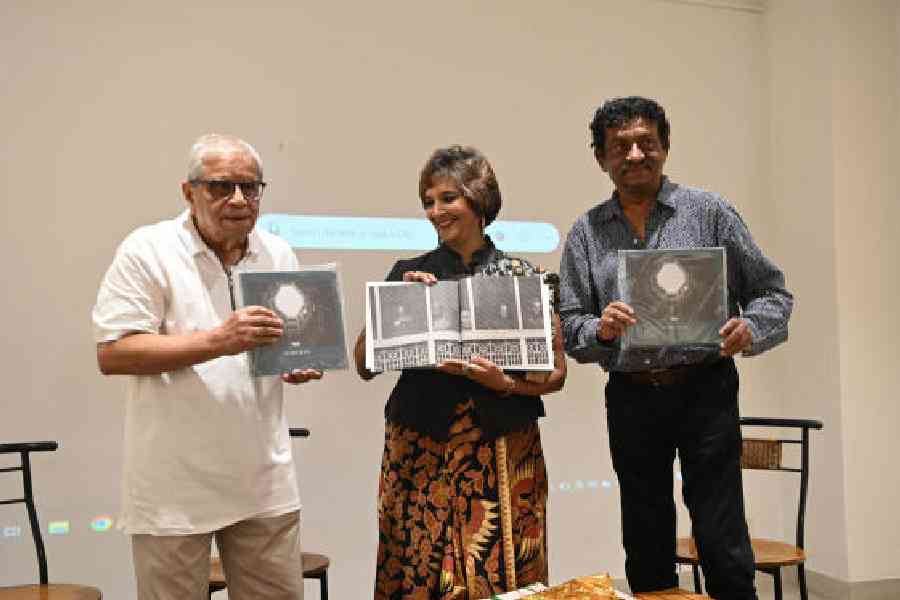The diverse moods and hues of Calcutta have been captured in black and white photographs.
Downtown Kolkata and Other Happenings, a book by Sumit Basu, is a compilation of 60 photographs captured in film. The book was released on Sunday evening at Maya Art Space in Kasba.
“Black and white is a different language,” said Basu, 78, after the release of the book.
He believes in doing everything by his own hand in his studio. “...I have kept up the practice and still work in my darkroom and make prints,” he writes in the book.
“The photographs for this project were never taken on the basis of a preconceived or structured conception or script. I went out in the streets and shot intuitively, never knowing what the next turn of the street would reveal...” he writes in the book.
The 60 photographs in the book, most of which were shot in Calcutta, were taken over a few decades, the earliest one in 1987.
An artist’s studio in Kumartuli, two policemen on a road and their “receding footsteps” resembling “dance movements” under the February sun, B.R. Ambedkar’s statue in a car repair garage and Babughat after immersion are the subject of some of the photographs in Basu’s book.

Some of the photographs from the book
The book was released by film director Goutam Ghose and Paula Sengupta, dean, faculty of visual arts, Rabindra Bharati University.
“Still photographs are a moment. They are there once, they don’t come back,” said Ghose.
“Today, Calcutta has processions everywhere and in Sumit Basu’s photographs we saw different forms of Calcutta — what a contrast,” said Ghose.
“A photograph shows what he (the photographer) thought.... When we later see we would see more into a photograph.”
Ghose referred to the blinds, walls and the cornice in Basu’s photographs, which he feels would stay back as “memories of time”.
“In our country, every city has changed, it had become homogenous, look alike, same multi-storey buildings and shopping malls,” said Ghose.
Every city, he said, has a distinct character which is changing. “So it is only in the photographs by people like Sumit that these will be alive,” he said.
Sengupta said Basu has captured a city which is lost to the vagaries of time.
“Publications like this have a value in drawing our attention to what we are losing and what we are allowing to slip through our fingers. It is important to be alert to what we stand to lose if we are not careful and conscious of our inheritance, and not just our heritage,” said Sengupta.











